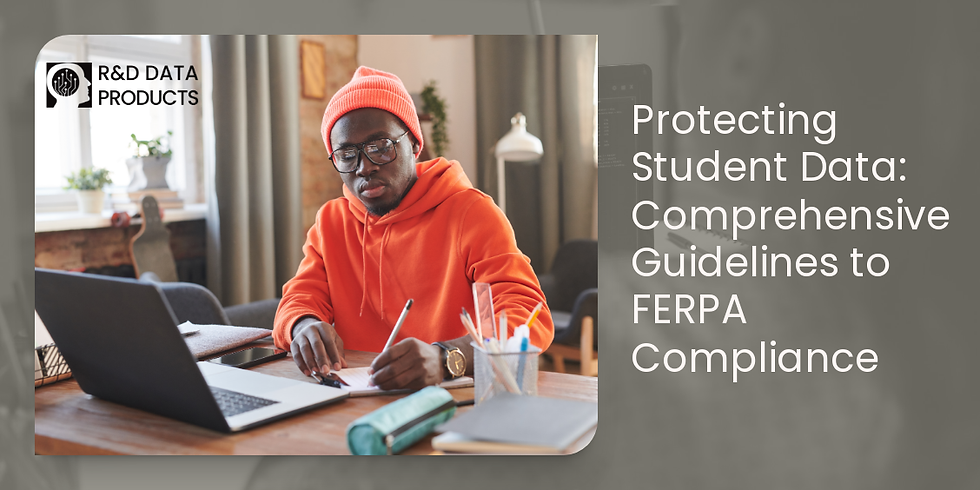Understanding Cybersecurity Compliance for NJ, Eastern PA, and NY Schools & Government
- Dillon Diatlo
- Jul 1
- 3 min read

As cyber threats grow more sophisticated, schools and government agencies in New Jersey, Pennsylvania, and New York must navigate a patchwork of cybersecurity standards, federal regulations, and state laws. For IT leaders, this isn't just about checking boxes — it's about protecting sensitive information, maintaining public trust, and qualifying for essential funding.
This guide breaks down the compliance landscape for SLED (state, local, and education) entities, offers actionable steps to get ahead of audits, and recommends hardware solutions from trusted vendors like Fortinet, Palo Alto Networks, and Extreme Networks that can help make compliance automatic.
Table of Contents
1. Why Cybersecurity Compliance Matters for NJ, PA, NY Schools & Government
Compliance isn't just a legal requirement — it's your foundation for risk reduction. FERPA, HIPAA, NIST, and New Jersey, Pennsylvania, and New York's own cybersecurity regulations all point toward one thing: proactive defense.
Failing to comply can lead to:
Loss of federal or state funding
Legal liability in the event of a breach
Reputational damage with your community
For SLED decision-makers, compliance is an investment in both operational continuity and public trust.
2. Key Cybersecurity Regulations You Need to Know
NIST Cybersecurity Framework (CSF) Voluntary but widely adopted. Offers a solid playbook of five core functions:
Identify
Protect
Detect
Respond
Recover
CISA Cyber Hygiene Best Practices Published by the Cybersecurity and Infrastructure Security Agency, this guidance encourages:
Patch management
Device access control
FERPA & HIPAA These federal regulations govern data privacy for students and citizens. Noncompliance can result in funding loss, legal action, or both.
New Jersey State Guidelines New Jersey Office of Homeland Security & Preparedness (NJOHSP) works closely with state education and municipal departments to promote best practices around:
Secure cloud adoption
Incident response planning
Mandatory reporting requirements
Pennsylvania State Guidelines
Pennsylvania's Office of Administration and Department of Education emphasize compliance with:
Pennsylvania Breach of Personal Information Notification Act
Implementation of the PA Enterprise Security Architecture (ESA)
Regular vulnerability assessments and incident response protocols
New York State Guidelines
New York’s Education Law § 2-d and SHIELD Act require:
Encryption of PII (personally identifiable information) at rest and in transit
Designation of a Data Protection Officer (DPO)
Adoption of NIST-aligned cybersecurity frameworks
Vendor management policies for third-party data access
3. Common Gaps That Trigger Noncompliance
Shared Logins and Weak Access Control
Without strict Identity & Access Management (IAM), it's impossible to know who accessed what and when.
No Centralized Logging or Alerts If a breach occurs and you don’t have logs, you're already behind.
Unencrypted Sensitive Data Whether it's student records or confidential municipal documents, unencrypted data in transit or at rest is a major liability.
Lack of Role-Based Permissions
Not every user needs access to everything. Over-permissioning is an audit red flag.
4. Tools That Help Automate & Enforce Compliance
At R&D Data Products, we help public sector clients go beyond baseline compliance. Here's how our vendor partners support automatic enforcement:
Fortinet
FortiGate NGFWs segment networks and enforce access policies
FortiAnalyzer enables detailed log analysis and reporting
FortiAuthenticator supports MFA and role-based access
Palo Alto Networks
Identity-aware traffic inspection with Prisma Access
Advanced endpoint logging and anomaly detection with Cortex XDR
Extreme Networks
Role-based network access at the switch level
Cloud-based visibility and analytics to simplify compliance documentation
Scale Computing
Secure, redundant storage that supports encrypted backups
Simplified high-availability solutions for disaster recovery planning
5. Summary Table: Actionable Compliance Checklist
REQUIREMENT | ACTIONABLE STEP | R&D-RECOMMENDED TOOLS |
Enforce Role-Based Access | Set IAM policies by job title | Fortinet, Extreme Networks |
Segment Networks | Limit lateral movement between systems | Fortinet, Palo Alto Networks |
Enable Multi-Factor Authentication | Protect logins to critical systems | Fortinet, Palo Alto (Prisma Access) |
Encrypt Data | Apply encryption at rest and in transit | Scale Computing, Fortinet |
Set Up Monitoring & Alerts | Log activity, detect anomalies, respond faster | Fortinet, Palo Alto (Cortex XDR) |
Maintain Audit-Ready Logs | Store and organize logs for compliance checks | FortiAnalyzer, ExtremeCloud IQ |
Need help preparing for a compliance audit?
R&D Data Products has been helping New Jersey, Eastern PA, and NY schools and public agencies meet compliance goals for over 35 years.
Let’s make your network not just secure — but audit-proof.



Comments